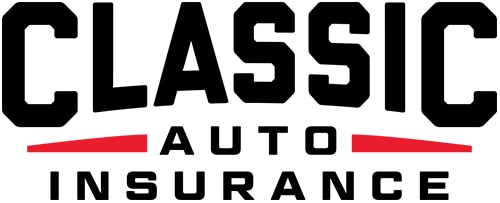Developed in record time with a practically nonexistent budget, no one—including Chevrolet—expected much when the 1965 Ford Mustang was introduced to the public at the World’s Fair on April 17, 1964. In fact, Ford expected to sell around 100,000 Mustangs within the first year. So what happened?
They sold 22,000 Ford Mustangs on the first day alone.
Designed by Lee Iacocca, the Mustang was an undeniable sensation, launching a whole new genre of cars, known as “pony cars,” named after the Mustang, but known for their affordable price, compact size, long hood, short deck, high performance, and appeal to a younger generation.
What was Chevrolet’s answer to this undoubtedly successful car made by their top rival? The Chevrolet Camaro, or “The Panther,” as it was known by those developing the car, using only its codename to keep their project under wraps, but the release of the Camaro wasn’t necessarily only a reactionary development. Here’s how the Camaro came to be.
The Beginnings of “The Panther”
Very few outsiders knew that General Motors designers were working on an idea similar to the Mustang since 1962, wanting to produce a compact coupe that was youthful and stylish. Chevrolet styling chief Irv Rybicki wanted to take the appeal of Ford’s Thunderbird and Buick’s Riviera, but make it smaller and more affordable—and therefore more appealing to a younger audience.
Another concept Rybicki wanted to include in this new car was the compact Chevy II’s unibody and mechanicals. When he brought his ideas to the vice president of design at General Motors, Bill Mitchell, Mitchell was intrigued. He gave Rybicki the go-ahead to start working on the project, but with one stipulation: That all work took place outside the building so no one could see what they were up to. They took their work across the street to a warehouse, working on a life-size clay model—one that was coincidentally almost identical in length and dimension to Ford’s Mustang.
When they showed the model to then Chevrolet general manager S. E. Knudsen, he told them, ”I’ll tell you, fellows, the one thing we don’t need right now is another car.”
The project was essentially dead in the water.
Stalled at the Starting Line
Why was Knudsen not more enthused about the Camaro during these early days of development? It has a lot to do with the blazing success General Motors was experiencing in the 1960s. Chevrolet and General Motors (GM) were already selling 6 to 7 million vehicles annually. It just didn’t make sense to invest in a vehicle when they weren’t sure the market would accept another vehicle.
At the time, there were already 5 stable, distinct lines of passenger cars being produced by Chevrolet: The rear-engine compact Corvair, the conventional compact Chevy II, the mid-size Malibu, the space-age looking Stingray, and a full-size Chevy, with additional plans already in place for mid-size Chevelles.
There just wasn’t space in an already-full market, which means the project was quickly abandoned.
In the Meantime…
Without any traction for the car that would become the Camaro, Rybicki channeled his efforts elsewhere. In 1963, he and Henry Hagas designed a Chevy II-based sporty coupe called the “Super Nova.” This car was cleanly sculpted and, like the Mustang, had a long hood and a sloping rear roof. GM’s Bill Mitchell liked this car and developed a production-ready, fiberglass-bodied car to send to the April 4, 1964, New York Auto Show—less than 2 weeks before the April 17 reveal of Ford’s Mustang at the World’s Fair held in the very same city.
Of the Super Nova, Knudsen said:
“It was an ideal car that was not so exotic that you couldn’t produce it. I recall some of the Ford people coming over while I was standing there and asking whether we were going to build the car. And I remarked, ‘If they’ll let us, we’ll build it.’ I think that shook ’em up a bit because it was a pretty good-looking car.”
The problem? It was downplayed as a concept piece and stalled just like its predecessor, which would eventually become the Camaro.
No Big Deal? The Premiere of the Mustang
Even after the Ford Mustang debuted to acclaim and successful sales, not very many at GM took it very seriously. Chevrolet assistant general sales manager Bub Lund said of Ford’s creation:
“I remember walking in to view the Mustang the first time we got hold of one, and I looked at it and said it would never sell. It seemed too boxy and square—unappealing.”
This seemed to be the overwhelming opinion at GM except for people like Knudsen, that it was going to be nothing more than a passing phase. But when Mustang sales surpassed their goal of 100,000 sales in the first year in a mere four months, GM gave the green light to produce a car that could compete with the Mustang. With it, the nickname “The Panther” came to be.
Chevrolet raced to engineer a car that would stand up to the success of Ford’s Mustang. As Rybicki recalled: “As I remember, the word came down that we would have to beat it in every dimension.” They sought to build a car that surpassed the Mustang in every capacity. They wanted it to be longer, lower, wider, roomier, faster, and smoother. The catch was that it needed to be built on the platform intended for the compact Chevy II Nova and use plenty of off-the-shelf parts to keep costs low for GM and for consumers.
A Dangerous Disease: The Naming of the Car
While in development, “The Panther” went through name after name, with executives considering over 2,000 names before settling on the name “Camaro.”
There has been much debate and deliberation about the origin of the name. Of course, the name kept with the tradition of christening Chevrolet cars with names that began with the letter “C.” Many suggest that the name was based on an old French slang term referring to camaraderie and friendship.
Rumor has it that some GM executives told the media that “Camaro” was the name of a rare disease that killed horses, or a small, vicious animal that eats Mustangs, obviously a clear jab at their competition.
The Official Announcement
Chevrolet knew that they needed to make a splash with the introduction of the Camaro to compete with the Mustang. To do so, they gathered select members of the media and Chevy’s PR team in hotels in 14 different cities throughout the U.S. for a conference call announcement on June 28h, 1966.
While this may not seem like a big deal today, in 1966 this was the first teleconference conducted on such a large scale, and there were over 100 technicians from Bell on hand to ensure that the call went through without a hitch. Chevrolet knew that announcing the release of the Camaro on the world’s first mass-scale teleconference would surely get their name in the news.
The Camaro made it’s official debut a few weeks later on September 12 at a GM press conference that announced the division’s full 1967 line. Speaking of the Camaro, the current Chevrolet general manager Pete Estes said, “We don’t expect the Camaro to outsell the Mustang immediately, but eventually, it will!”
The Chevrolet Camaro Hits the Market
One of the major selling points of the new Camaro was how customizable it was. Camaros could come in any price range, with options for smaller engines to suped-up, powerful ones.
A 1967 model could have a V-8, 295-horsepower, 350-cubic inch version of the Chevy small block engine that would take off from zero to 60 miles per hour in 7.8 seconds. Some reviewers though preferred the six-cylinder version for its all-around balance even if it decreased in power to 140-horsepower. In total, there were seven different engine options available when the Camaro reached the market.
Chevrolet wasn’t the only automaker in the U.S to try and compete with the success of the Mustang. Pontiac released the 1967 Firebird, Mercury released the 1967 Cougar, and Chrysler-Plymouth retooled the Barracuda to appeal to a 1967 consumer market to boost its previously lukewarm consumer response.
How did the Camaro do compared to the Mustang?
- In 1965, the Mustang amassed almost 500,000 sales and 548,000 in 1966.
- In 1967, there were 443,000 Mustangs sold, while the Camaro debuted with a little more than 200,000 units sold
- In 1968, there were 299,000 Mustangs sold and 218,000 Camaros sold
- In 1969, there were 293,000 Mustangs sold and 194,000 Camaros sold
- In 1970, Ford only sold 170,000 Mustangs, while Chevrolet sold 148,000 Camaros
In each of these years, the Firebird, Cougar, and Barracuda couldn’t keep up with sales of the Mustang or the Camaro.
And as for the Camaro? It received critical acclaim and widespread credibility. The International Race of Champions used nothing but Camaros from 1975 to 1989.
The Mustang and the Camaro Today
In the years that followed, the Mustang and the Camaro would continue to compete until the Camaro announced that it was canceled in 2002 alongside the Firebird after sales fell 53 percent from 1990 to 2000. At that point, the Mustang was the only “pony car” remaining on the market. That is, until the Camaro was reborn in 2009 to the joy of car enthusiasts everywhere. Neiman Marcus even released their own special-edition Camaro convertible in 2011. It came in a Bordeaux-red color with “ghost stripes,” cost $75,000 and sold out in only three minutes.
In the present day, the Camaro and the Mustang both come with impressive chassis tuning and performance whether you’re looking at a base model or a top-of-the-line ZL1 or GT350R.
But if you ask us, you can’t beat the nostalgia, beauty, or power of a 1967 Mustang or Camaro.
Custom Auto Insurance for a Piece of Automotive History
Whether you’re lucky enough to have a pristine 1967 Camaro or one of its cohorts, you can’t get the insurance you need for this piece of automotive history just anywhere.
Classic Auto Insurance is here to offer specialized classic car insurance coverage for your collectible car.
No two classic cars are alike, which is why our insurance coverage plans are custom-tailored to fit each one. Our coverage plans are as unique as your favorite car, so you can enjoy your Camaro, Mustang, or other classic cars, and pass on the legacy you’ve worked so hard to build.
If your collectible car is old or new, we have the insurance to protect it. We can tailor a policy to fit your needs. We offer affordable, Agreed Value coverage for a variety of collectors, classic, and custom vehicles. Our friendly, knowledgeable staff can answer your questions and give you a quote on the spot. Call 888-901-1338 or get an instant quote online and see how we can help safeguard your dream car.





